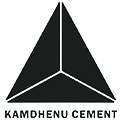In the world of remodelling and home improvement, OPC cement has become an incredibly common material in recent years. But just because it’s commonly used doesn’t mean you should use it without knowing what you’re doing. That’s why we’ve compiled this guide to OPC cement that will tell you everything you need to know before buying or using this product! Below we will break down some of the most popular features of OPC cement on the market today so that you can make an informed decision about what type is best for your specific needs.
The Different Types of OPC Cement
There are three different types of OPC cement on the market, each with its own benefits and drawbacks. Some are more expensive than others, some have longer drying times, and some have better color retention. It’s important to decide what you’re looking for in your purchase before making a purchase decision so that you can find the right product.
1) Clay-based OPC cement – This cement is more expensive than other products, but they offer better color retention, which is an important factor in flooring materials. These products dry quickly and usually take less time to set up than other options on the market.
2) Oil-based OPC cement – Unlike clay-based OPC cement, oil-based products are cheaper and offer faster drying times. They also tend to be lighter weight and easier to work with, though this does mean that the color retention is not as strong. If you want something quick and easy, then this may be the best option for you.
3) Latex-modified OPC cement – These offer similar properties to oil-based OPC cement but are heavier duty when it comes to cleaning up messes or spills because latex helps reduce the staining power of water. They also provide excellent color retention, just like clay-based OPC cement does, without costing as much money upfront.
When it comes to concrete products, you have many different options. From cement and aggregate to air content and water-to-cement ratio, the list goes on and on. One of the more popular choices is OPC cement. It’s often used in commercial projects because of its affordability, durability and strength.
The Manufacturing Process of OPC Cement
OPC cement is manufactured in large quantities for use in the construction industry. The manufacturing process of OPC cement involves several stages and steps, including quarrying, milling, kiln firing and grinding. Quarrying is the first stage of the process and involves extracting raw materials from limestone deposits by breaking them up with heavy machinery. The crushed rock is then transported to the mill, where it is grounded into a powdery substance called slag.
Slag can be used to produce different types of products, such as cement or steel, with varying degrees of purity depending on its intended use. Milling can take place either at the quarry or at an external facility. It is generally done to reduce rocks down to more manageable sizes. There are many types of mills that are used during this process, but the most common type is a ball mill that crushes rocks between two rotating balls made from hard metal or stone.
Lightweight particles like coal and ore are then transferred from the mill onto a conveyor belt that carries them along before dropping them onto another belt underneath, which carries lighter particles away while leaving behind heavier ones. These heavier particles are taken away so they can undergo another round of crushing before being transferred back onto the original belt that took lighter particles away earlier on in order for those light particles to go through their own cycle again.
The Advantages of Using OPC Cement
Below are some of the benefits of using OPC cement:
- OPC cement is an environmentally friendly product.
- OPC cement is easy to mix and use.
- OPC can be used on a variety of surfaces, like wood, tile, stone, metal and plastics.
- OPC sets quickly with minimal shrinkage and cracking during drying time (about 24 hours).
- When you’re done with it, you can store it for later use, so it doesn’t take up space in your garage or basement when not in use.
- The best part of OPC cement is it holds firm strength and durability.
- It also takes a while to set, and you need to keep the area closed off while it’s drying so no dust or dirt enters the freshly laid material.
Conclusion
The OPC cement industry is currently experiencing significant growth rates. However, with the increased demand and production, there is a higher risk of quality control issues. Consumers need to be aware of the risks associated with buying OPC cement and make sure they know exactly what they are buying. By being aware of the risks, consumers can make more informed decisions on purchasing their next batch of OPC cement. Furthermore, if you are looking for more such details on OPC cement, get in touch with us. Kamdhenu Cement is the best cement manufacturer that provides high-quality cement that helps in making strong and durable structures.


